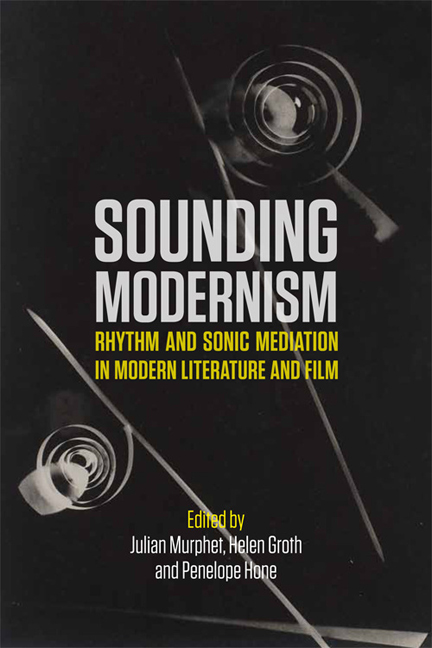1 - Introduction: Sounding Modernism 1890–1950
Published online by Cambridge University Press: 22 December 2017
Summary
Did modernism sound differently from its predecessor aesthetic dominants, realism and romanticism; and if so, how? Was it louder, or quieter, or were the ears of its subjects simply that much more sensitive, or deadened? What were its organs of projection and of audition, and how may these have been reshaped, retrained by technologies capable for the first time of retaining and replaying sonic phenomena? How did the older arts adapt to make sense of these new sound media, or remediate them into their own traditional substances: paint, sculpted wood and metal, or letters printed on a page, let alone those more privileged instruments of the orchestra proper? Were the sounds sacred to aesthetic and cultural traditions to be protected from or shattered by the growing din of an industrial economy driven by colossal mechanical engines and a plethora of new and noisy consumables (cars, motorbikes, train journeys, vacuum cleaners, aeroplanes, and so on, let alone the directly mediatic everyday instruments: telephones, radio sets, gramophones and dictaphones)? Let Edvard Munch's great painting The Scream stand as an indicative aesthetic testimony to the prodigious affective impact of auditory phenomena wound to the pitch of mental crisis across this entire period; those great luminous whorls etched into the vivid evening like the palpable traces of a subjective thermonuclear explosion: the inscription of a radical sonic Real on the firmament itself.
If, at the very outset of the period considered by this volume, Walter Pater had advised that all art constantly aspires ‘to the condition of music’, then that late-romantic reaching toward some musically harmonious aesthetic apotheosis would perforce, in the decades that followed, be violently rerouted through the disreputable noises of a transformed public sphere and its underlying economic mode of production. Undoubtedly the very concept of ‘music’ was altered beyond recognition by way of this unprecedented passage, as first the various experiments with serialism and dodecaphonic scale, and later musique concrète, make palpable at the level of composition.
- Type
- Chapter
- Information
- Sounding ModernismRhythm and Sonic Mediation in Modern Literature and Film, pp. 1 - 16Publisher: Edinburgh University PressPrint publication year: 2017



